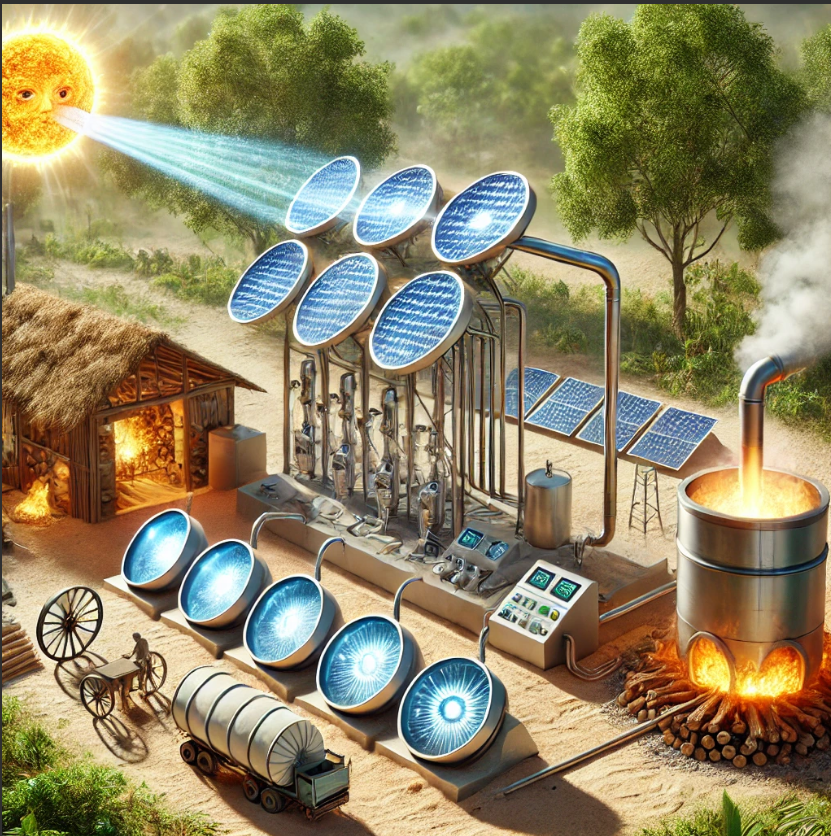In the push toward a sustainable future, free renewable energy is not just an ideal—it’s an achievable reality. By leveraging accessible resources like sand, biomass, and waste, we can create local systems that provide energy and processing power for individuals and communities. Here’s how it can be done.
1. Sand to Silicon: Harnessing Solar Power for Processors and Solar Panels
The core challenge in turning sand into the silicon used for solar panels and processors is the energy required to heat it. However, with modern control systems and the use of Fresnel lenses, which concentrate sunlight, this process can be made highly efficient and automated. A Fresnel lens can focus sunlight to generate the temperatures necessary for silicon purification, while automation systems move the material through various stages of processing.
With a combination of concentrated solar energy and automation, it’s feasible to take raw materials like sand, apply heat using solar power, and create solar panels or processors. This method not only reduces energy costs but also ensures the process is entirely green, removing dependence on fossil fuels or grid power.
2. Pyrolysis: Solar-Powered Waste Conversion
Another exciting application of solar energy is pyrolysis, which uses high heat in an oxygen-free environment to break down materials like organic waste, plastics, or biomass into useful by-products such as biochar, syngas, and bio-oil. This process can be powered by solar energy using the same Fresnel lens technique to generate high temperatures.
In remote or rural areas, a pyrolysis setup can convert waste materials into valuable fuel sources, creating a circular system that provides energy from waste while reducing landfill usage. Pyrolysis plants powered by solar energy can be compact, scalable, and easy to maintain, making them ideal for decentralized, off-grid solutions.
3. Biomass Steam Generators: Rural Power for All
In addition to solar-powered silicon and pyrolysis systems, biomass steam generators offer another free renewable energy option. By burning wood, grass, or any combustible waste, the heat generated can drive a steam engine that turns a generator. This method is perfect for remote or rural areas where access to traditional fuels and infrastructure may be limited.
Steam generators fueled by biomass can be built and maintained using local resources, creating an energy solution that’s independent of large power grids. The setup is ideal for communities that rely on local materials and need a reliable energy source. By combining solar energy, pyrolysis, and biomass systems, people can achieve energy independence with minimal cost and environmental impact.
Conclusion
With a combination of solar-powered silicon processing, pyrolysis for waste-to-energy conversion, and biomass steam generators, free renewable energy is within reach. These systems can work in harmony to provide sustainable energy solutions for both developed and remote areas, reducing costs, emissions, and dependence on centralized power sources. By harnessing the power of the sun and locally available resources, the future of energy can be green, scalable, and accessible to all.
This article provides a glimpse into how individuals and communities can take control of their energy needs and build a sustainable, renewable future—one that starts with simple materials like sand, waste, and biomass, powered by the most abundant resource of all: the sun.




